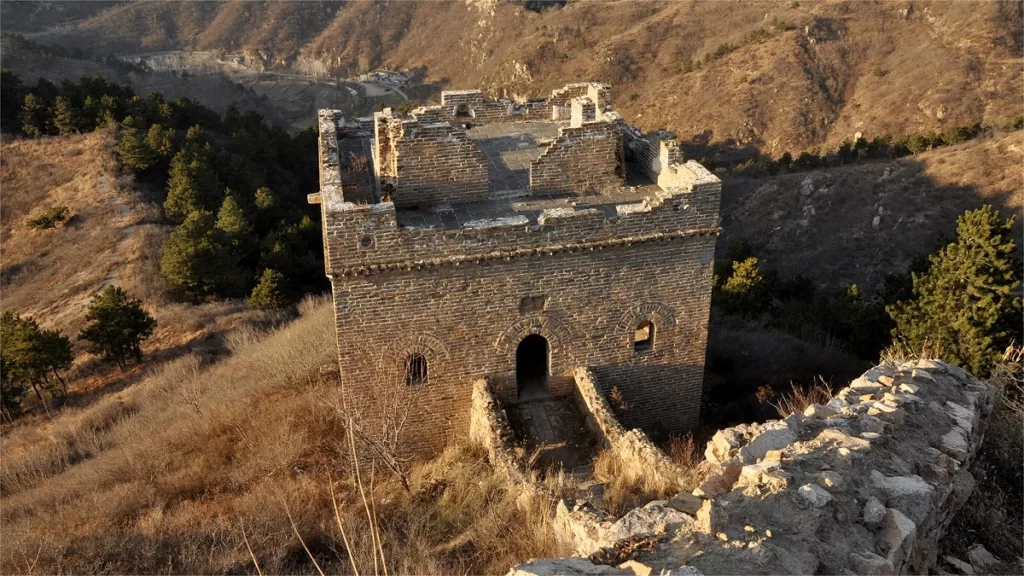Daci Pavilion (大慈阁, Daci Tower), originally named Dabei Pavilion, is a historical gem that dates back to 1227, during the Yuan Dynasty. It was built by Zhang Rou, the Duke of Cai, and derives its name from the main structure known as Daci Pavilion. This magnificent site covers an area of 1600 square meters and is located in the city of Baoding, China.
Daci Pavilion is positioned facing north and overlooking the south, featuring several key architectural elements that make it a cultural and historical treasure. The prominent structures within the compound include the Mountain Gate, Heavenly Kings Hall, Bell Tower, Drum Tower, Daci Pavilion, and the Guandi Temple. Notably, Daci Pavilion stands tall as the tallest ancient building in Baoding.
Basic Information
| Estimated Length of Tour | 1 – 2 hours |
| Ticket Price | Free |
| Opening Hours | 8.30 – 17.00; Last admission: 16.30 Closed on Mondays |
| Telephone Number | 0086-0312-2020034 |
Location and Transportation
Daci Pavilion is situated at 57 Chuangxinglou North Street, Lianchi District, Baoding City, Hebei Province. Finding your way to this historical and cultural gem is relatively straightforward. Just take Bus No. 1, 4, 12, 8, 20, 26, or 302, get off at Zhongzhou Plaza Stop (钟楼商厦站), and walk about 200 to the north.
Highlights of Daci Pavilion
Daci Pavilion
The Daci Pavilion soars to a height of 31 meters, boasting three layers of grandeur. To reach the pavilion, visitors ascend 22 stone steps, setting the stage for a breathtaking experience. Once inside, the focal point is the awe-inspiring statue of Avalokitesvara Bodhisattva, gracefully seated on a lotus pedestal, exuding serenity. This wooden sculpture, standing at an impressive 5.5 meters, features 42 arms, each holding various symbolic implements. On the walls of the pavilion, one can admire murals depicting the eighteen Arhats and scenes from Buddhist scriptures, created during the late Qing Dynasty. The second and third levels offer a surrounding corridor, providing panoramic views of the bustling cityscape and traditional homes that have stood the test of time.
Guandi Temple
Behind Daci Pavilion, one will find the Guandi Temple, originally constructed during the Ming Dynasty. It was initially known as the Hanshou Tinghou Temple. The main hall boasts a width of three bays and a deep single bay, earning it the name “Reversed Guandi Temple” as it faces south to north, an unusual orientation for temples.
Seasame Oil
Beyond its architectural splendor, Daci Pavilion is also renowned for its delectable cuisine. Daci Pavilion sesame oil is a standout product, crafted from meticulously selected sesame seeds and processed using a special technique with small stone mills. This method preserves the traditional and rustic flavor of sesame oil, resulting in a rich reddish-brown color and a clear, brilliant appearance. The fragrance of this sesame oil lingers delightfully.
Vegetarian Noodles
A culinary treasure that has been cherished for over eight centuries is the Daci Pavilion noodles. These noodles are characterized by their white, chewy texture, and they are typically served with a variety of toppings, including green vegetables, tomatoes, and mushrooms. The noodle soup is enriched with nourishing ingredients such as wolfberries, jujubes, Chinese angelica, and ginger, simmered for hours to perfection.
Pickkled Vegetables
Daci Pavilion’s pickled vegetables, boasting a collection of thirty different varieties, blend the best of northern flavors with southern influences. They have developed a unique production process that maintains the sweet, salty, tender, and crunchy taste that epitomizes the traditional flavors of past generations.
Pastries and Sweets
In the realm of pastries and sweets, Daci Pavilion has a rich history. Initially reserved for emperors, dignitaries, and the monastery’s residents, these delicacies have evolved over the years. Seasonal pastries, such as wisteria and lily cakes for spring, mint and mung bean cakes for summer, chrysanthemum and osmanthus cakes for autumn, and radish and red bean cakes for winter, celebrate the changing seasons. Year-round treats like Dacusu pastry, chrysanthemum pastry, and lily pastry continue to delight visitors and locals alike. The “Welcome Door” pastries are specially prepared to welcome guests, including items like “One-Bite Cup” and cotton candy.
Useful Tips Summarized from Reviews
Sunday Afternoon Buddhist Chanting Class: Every Sunday afternoon from 2:30 pm to 4:30 pm, there is a Buddhist chanting class available.
Free Tea Offered: Within the temple, complimentary tea is provided to visitors.
Quiet Atmosphere and Limited Crowds: Despite its compact size, the temple is serene and not crowded. The architecture is beautiful, adorned with peeling wall paint and weathered decorations, showcasing a rich historical ambiance. The tranquil setting and historic features make it an excellent location for photography.










